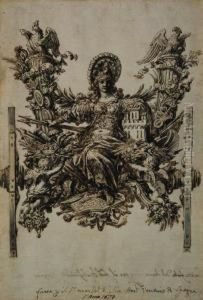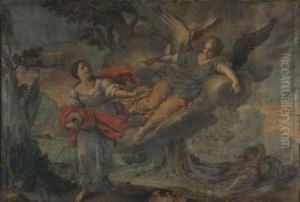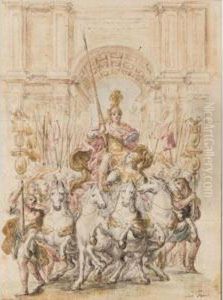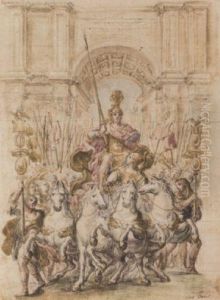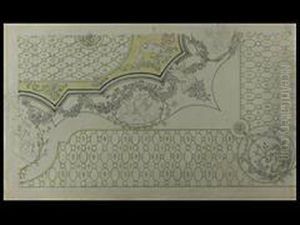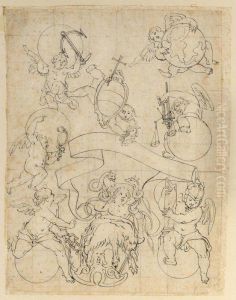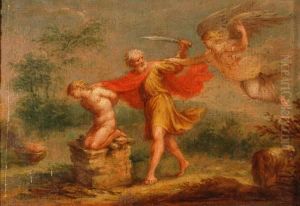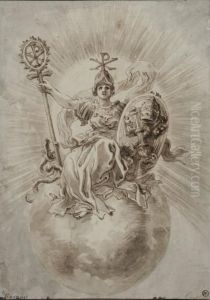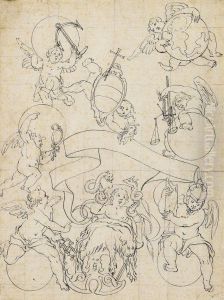Giovanni Paolo Schor Paintings
Giovanni Paolo Schor, born in 1615 in Innsbruck, was an Austrian-Italian painter and architect. He is often associated with the Baroque movement, which was characterized by its dramatic use of light, rich color, and expansive techniques that conveyed motion and emotion. Schor's work reflects the elaborate and decorative style of the period, although he is not as widely recognized as some of his contemporaries.
Schor's early life and training are not well-documented, but it is known that he moved to Italy, which was a center for artistic development during the Baroque era. He spent a significant part of his career in Rome, where he was influenced by the works of other Baroque artists such as Gian Lorenzo Bernini and Pietro da Cortona. Schor's own style was formed through the absorption of this vibrant artistic environment, where he developed a penchant for grandiosity and ornamentation in his designs.
In Rome, Schor became involved in the decoration of palaces and churches, contributing to the rich tapestry of Baroque art and architecture in the city. His work included frescoes, altarpieces, and architectural designs. He was also known for his skills in creating illusionistic ceiling paintings, a popular technique at the time, which involved painting scenes in such a way that they appeared to extend architecture into heavenly realms.
Despite his contributions to the arts during his lifetime, Giovanni Paolo Schor's work was overshadowed by the more prominent figures of the era, and as a result, he did not achieve the same level of fame. Nevertheless, his paintings and architectural designs remain as examples of the lush aesthetic of the Baroque period.
Giovanni Paolo Schor passed away in 1674. While his name might not be as widely recognized as other Baroque artists, his work is still appreciated by art historians and enthusiasts who study the period. His contributions are part of the larger narrative of Baroque art, reflecting the grandeur and complexity of one of the most dynamic periods in Western art history.
